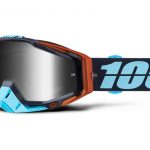Traction control, launch control, LEDs, switches, cables, carbon housing, cameras, gauges…oh, and a set of grips and levers (more levers than you think). Getting close-up with factory race bikes reveals a mine of minor tweaks and special touches; full customisation to make a moving vehicle the perfect projectile for competitive success.
Even in motocross now there is a lot going on for a rider and certainly a couple more buttons compared to ten years ago. Allowed special access to the Movistar Yamaha team and Valentino Rossi’s M1 with renowned mechanic Alex Briggs then level of offering goes up a notch – as you’d expect in MotoGP. There are also some basic similarities between the works bikes. Under all the tech is still a triple clamp and clip-ons and a set of forks.
The quest was to show a little of what Romain Febvre and Rossi like to see and work with when they are on track and to give an appreciation of how this has evolved over time. Fans’ fascination with watching bikes in a wash bay or ‘exposed’ shots from pit garages hint to an ingredient often neglected in the ‘show’ of racing; the utterly special ‘bling’ on display or – to give more credit – small works of art in engineering purpose and sometimes pure design thinking.
Febvre’s YZ450FM – explained to us by Data Technician Fabio Santoni – has the aesthetic of any stock YZ, or dirt-bike for that matter, but there is titanium and carbon pretty much everywhere and there is also the knowledge that the motorcycle has been infinitely tailored to the Frenchman’s wishes in every way alterable. The engine in particular is a Pandora’s box of performance and fully-dialled-in grunt.
Rossi’s M1 is a daunting creation of beauty, precision and fearlessness. I can recall how the motorcycle would swoosh past in the pitlane at Losail for the Qatar test – Rossi having already primed the Kill switch – and the bike then pinging and creaking, almost trembling with the stress of forces pushed through its entire being.
Special things then…for special athletes…
MXGP
“OK, so the most noticeable is the ‘kill’ switch, which every bike has. We also have the electric start then we come to the maps. We have the possibility for the rider to change between two maps on the ECU and another switch for the rider to enable or disable the launch control for the start. There is also another controller for the GPA [GET Power Assistance] system from GET – a type of traction control – so the rider can place the setting that he’d like from 1-10.”
To read the rest of the article simply click HERE








